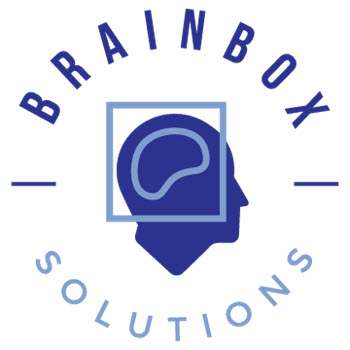
BrainBox HeadSmart II Study Investigators Aim to Provide Clinicians with First-Ever Biomarkers and other Functional measurements for Acute Traumatic Encephalopathy (ATE.) A clinical trial of multi-modal diagnostic/prognostic test, already underway, is published in Frontiers in Neurology/NeuroTrauma.
Investigators in a major clinical trial of patients with mild traumatic brain injury (mTBI or concussion) describe for the first time objective diagnostic criteria, based on blood biomarkers and neurologic testing, for acute traumatic encephalopathy (ATE), the immediate physiologic consequence the injury.
Acute Traumatic Encephalopathy (ATE) represents the condition of an objective measure of TBI associated symptoms or dysfunction that occur as long as 90 days following an acute head injury, according to the investigators. It may be manifest by neuropsychiatric dysfunction, imaging pathology, or biomarker abnormalities in a patient presenting with a history consistent with TBI. Objective criteria for ATE have the potential to advance the understanding of mild TBI and significantly improve its subsequent clinical management.
The ATE description was published in Frontiers in Neurology/NeuroTrauma along with the protocol for HeadSMART II clinical study (HEAD injury Serum markers and Multi-modalities for Assessing Response to Trauma), which is evaluating diagnostic and prognostic potential of BrainBox Solutions’ BrainBox TBI test.
“There is an urgent need for an objective testing approach to diagnose early TBI,” said W. Franklin Peacock MD FACEP, lead study investigator and Professor of Emergency Medicine and Vice Chair for Research in the Department of Emergency Medicine at Baylor College of Medicine. “Despite an estimated 2.8 million annual emergency department visits, TBI diagnosis is based largely on a report of loss of consciousness, post-traumatic amnesia, and/or confusion, without readily available objective diagnostic tests at the time of presentation, nor an ability to identify a patient’s prognosis at the time of injury.”
Objectives of the HeadSMART II study, which began enrolling patients earlier this year, are to:
- Diagnose ATE using statistical modeling methods that combine blood biomarker values, focused patient health information including imaging based on institutional standard of care, and neurocognitive/neuropsychiatric (NC/NP) testing; and
- Predict persistent symptoms up to 90 days after a diagnosis of ATE by using statistical modeling combining biomarkers, focused patient health information including imaging as required, and NC/NP testing.
The study is an international trial that will enroll up to 2,000 patients at up to 30 sites including Level I Trauma Centers, Emergency Departments (EDs) and urgent care settings in systems and community-based hospitals.
“Computerized tomography (CT), the leading technologic tool for diagnosing TBI, is considered insensitive for this injury. CT shows TBI-related abnormalities in only approximately 10 percent of patients evaluated in EDs, despite the fact that many patients have disabling TBI symptoms even after initial negative imaging,” said Damon Kuehl MD, Vice Chair of Emergency Medicine for Carilion Clinic and Vice Chair of the Virginia Tech Carilion School of Medicine’s Department of Emergency Medicine. Like Dr. Peacock, Dr. Kuehl is also a member of the BrainBox Scientific Advisory Board.
ATE diagnosis is defined by abnormal post-traumatic biomarkers, abnormal functional tests in patients who may also have normal CT scans, according to the investigators.
“Recent studies indicate biomarkers and neurocognitive assessments can identify injured patients and those likely to have post-concussive symptoms, regardless of imaging testing results, providing a physiologic basis for an ATE diagnosis,” said Ramon Diaz-Arrastia MD, PhD, John McCrea Dickson MD, Professor of Neurology, Director, Clinical TBI Research Center, University of Pennsylvania, Perelman School of Medicine, and Co-PI for the study. He noted that biomarkers provide objective evidence of injury-related leakage of brain proteins into the bloodstream.
“Neurocognitive and neuropsychiatric assessments can also be utilized to characterize functional deficits at the time of injury, and identify patients likely to have post-concussion symptoms,” he said. “mTBI patients, particularly those with repeat injuries, are at significant risk of long-term neuropsychiatric symptoms and late-life dementia. Objective diagnostic criteria for ATE will enable clinicians to monitor patients across the continuum of injury and assess the impact of interventions—and, long term, lead to improved outcomes.”
The BrainBox TBI test is a multi-modal test that includes blood biomarkers, a set of neurocognitive tests and proprietary AI algorithms to generate an objective score for diagnosis up to 96 hours from the time of injury and a prognosis report or likely injury related symptoms up to three months post-traumatic event. The test has received “Breakthrough Designation” from the FDA and can be used either at point-of-care or in clinical settings.
The publication is entitled, “Defining Acute Traumatic Encephalopathy (ATE): Methods of the “HEAD injury Serum markers and Multi-modalities for Assessing Response to Trauma” (HeadSMART II) Study.” In addition to Drs. Peacock, Kuehl, and Diaz-Arrastia, the authors include: Jeff Bazarian, MD FACEP, University of Rochester; Adam J. Singer, MD, FACEP; Renaissance School of Medicine at Stony Brook; Chad Cannon, MD, FACEP, University of Kansas Medical Center; Zubaid Rafique, MD FACEP, Baylor College of Medicine (Houston, TX; James P. d’Etienne, MD, MBA, FACEP, ); Integrative Emergency Services/JPS Health System (Ft. Worth, TX); Robert Welch, MD FACEP, Detroit Medical Center; Carol Clark, MD FACEP, and William Beaumont Hospital (Royal Oak, MI).
To learn more visit the link.
